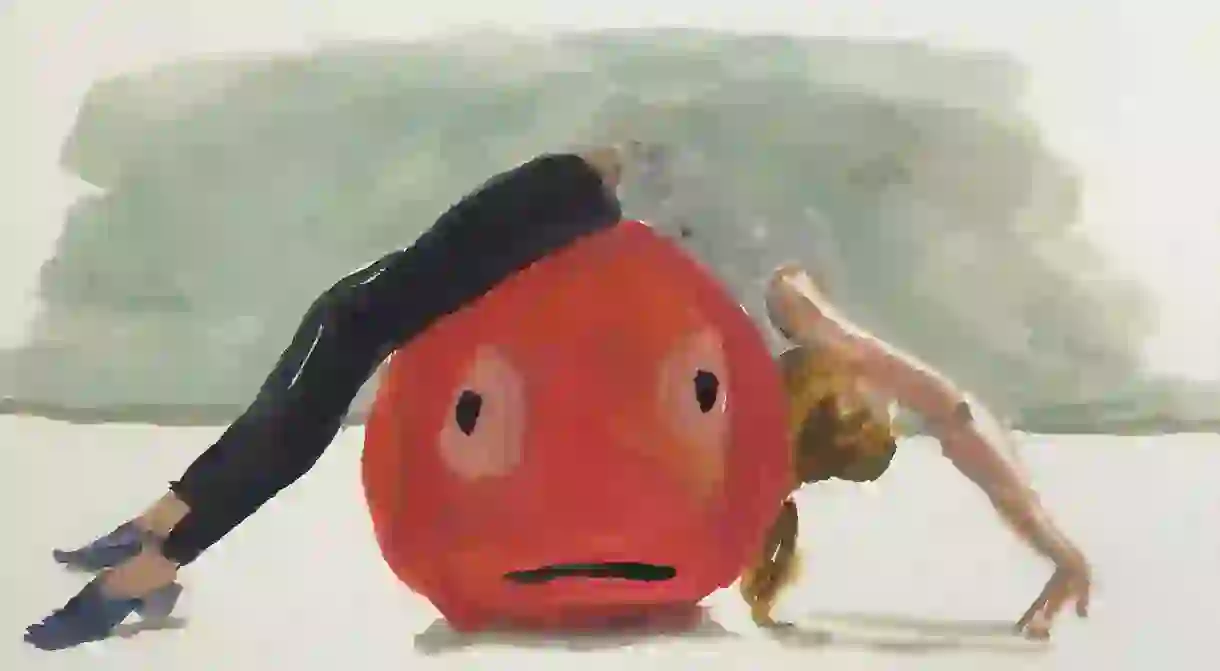Online Creativity: How Tel Aviv’s Art Community Has Gone Digital in 2020

In Tel Aviv, the cultural heart of Israel, contemporary artists and curators are finding new ways to exhibit artworks and react to current affairs through their practice. These artists from Tel Aviv and central Israel share how they transformed local art into a digital medium available to all.
Tamir Erlich was in the midst of his sculpture MA studies in London when the coronavirus pandemic started to spread, and his school closed its gates. He returned to Israel in order to quarantine with his partner, artist Noy Haimovitz, in their apartment. During quarantine, the two started to conceive the idea for a platform that would aim to “help us endure the difficulties involved with isolation and at the same time help others to continue to share their art,” says Erlich. The two artists decided to create the online art residency BIDUD (quarantine in Hebrew), which hosts Israeli artists, writers, curators and academics. As a take on the phrase “one day at a time”, each participant in the residency showcases their original project on BIDUD’s website for one day only. “Every project is a surprise to us,” says Erlich. “We learn what the participant has prepared only a day before the project airs.”
BIDUD incorporates an eclectic mix of texts, video and visual pieces that react to the coronavirus crisis. Visitors can find Yael Frank’s colourful sketches, which she prepared using her children’s watercolour kit as she currently cannot access her studio; Itamar Stamler’s virtual gallery, where he exhibits his works against pixelated walls; as well as a series of pencil-drawn illustrations by friends Ido Gordon and Ariel Narunsky. “BIDUD is a platform that brings individuals together as a result of the change of time and space we are experiencing,” says Erlich.
For many artists in Tel Aviv, the current situation inspired them to experiment with a digital exhibition for the first time. Multimedia artist and musician Maya Perry was supposed to start a one-week residency at RawArt Gallery for emerging artists. However, the gallery closed its doors, and Perry’s much-expected residency was cancelled. This, along with Perry’s feelings of anxiety and uncertainty triggered by the pandemic, prompted her to initiate her own residency. The result is youaresafe.net: an interactive website where visitors can share their thoughts anonymously, listen to music tracks, read excerpts from Perry’s book collection and submit drawing requests.
“The website functions as this sort of ‘black void’ for people to write anonymously, and I react to their thoughts. It is very therapeutic,” says Perry. She also considers the website as an alternative space for social media, a haven free of social validation. “Many artists and photographers, including myself, display their art on Instagram, but it can be quite toxic,” she says.
The website has received hundreds of drawing requests, and Perry sees them as an engine for her creative work. “I had anxiety and did not have the ambition to paint, but the cooperation of others, as well as the drawing requests, gives me a lot of strength. In return, the site gives visitors a sense that they are not alone,” she says.
More established members of the art world have had to shift gears as well. Inga Gallery of Contemporary Art, which has been exhibiting and selling Israeli art for the past 15 years, is also experimenting with an entirely new medium. The galley, situated in a trendy neighbourhood in southern Tel Aviv, closed its doors one day after the opening of its new exhibition by Israeli artist Shay Zilberman. Luckily, the exhibit, titled Garden’s Keeper, was entirely digitalised and uploaded to Inga’s website. “The situation was completely unplanned,” says Revital Gal, co-owner of Inga Gallery. “The day before the exhibition opened, I was offered this digital platform for free since it is still in development.” Gal took a leap of faith and authorised the digitalisation, resulting in Inga Gallery’s first-ever online exhibition.
Using advanced 3D technology, visitors can now “walk around” the gallery and explore Zilberman’s colourful collages in high-resolution. Even on the computer screen, the cosy and nonchalant ambience of Inga is apparent: personal belongings of employees are still scattered in the work area, and a semi-opened canvas is set against the wall. Even in these difficult times, creative minds of the Israeli art world continue to find ways to make art accessible to all through digital means.













